
Hello everyone, I am Board Brother.
The community disassembly activity has been ongoing for some time, and today we continue to look at different devices with community member “A Man’s Confusion”. Friends interested in the activity can go to learn more.👉The first phase of the 2025 Breadboard Community disassembly activity is here~~~
This time we are disassembling a vibration temperature sensor from a discarded device. I casually took it down to study its internal structure.
First, let’s look at the appearance. There is a power button on the top and the brand logo. The product model is WISE-2410. The product casing is hexagonal.
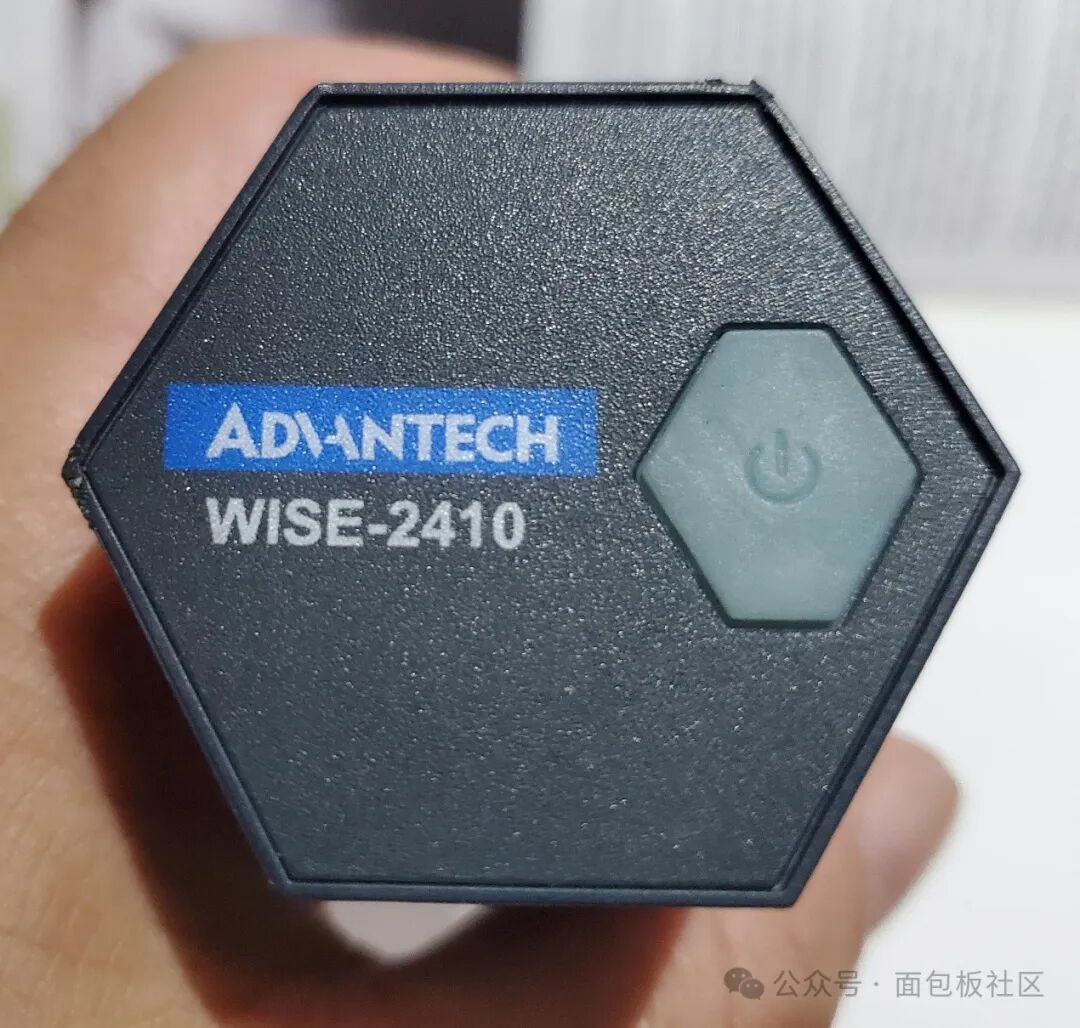 Product information label, the manufacturer is Advantech Co., Ltd. The product name is Wireless Vibration Sensor, made in Taiwan. The power supply used is 3.6VDC 0.9A. On the right is a product QR code, and the entire right side is made of stainless steel.
Product information label, the manufacturer is Advantech Co., Ltd. The product name is Wireless Vibration Sensor, made in Taiwan. The power supply used is 3.6VDC 0.9A. On the right is a product QR code, and the entire right side is made of stainless steel.
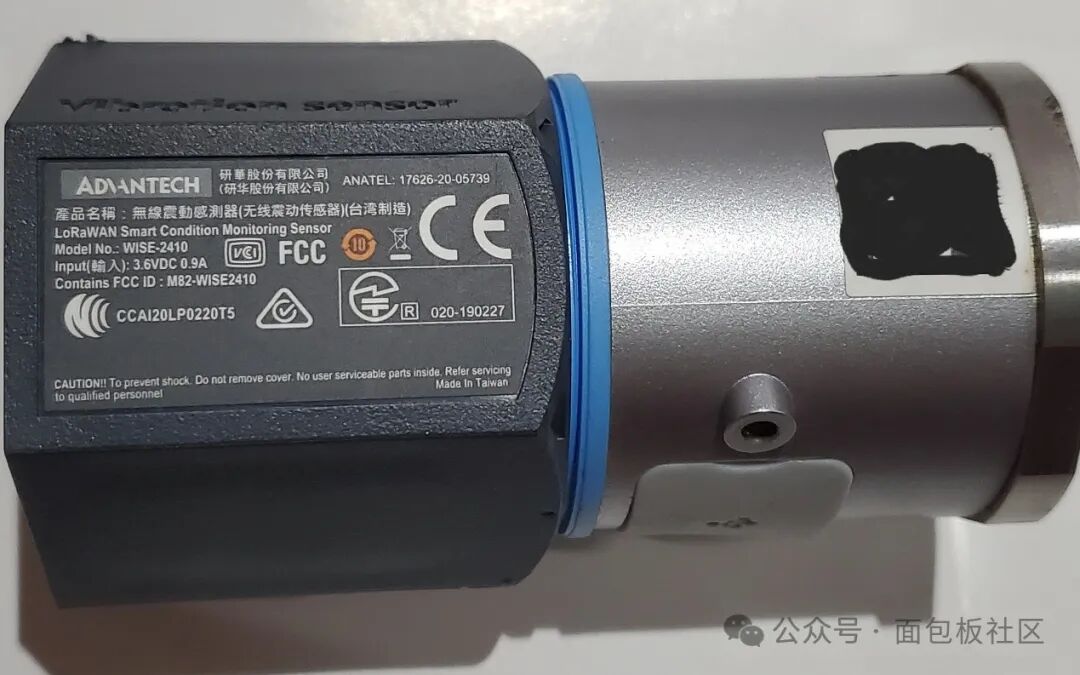 There is a USB interface on the side, as well as a circular interface. The bottom has a Y.
There is a USB interface on the side, as well as a circular interface. The bottom has a Y.
The side label is the Advantech original certification label.
 And the warranty service phone number.
And the warranty service phone number.
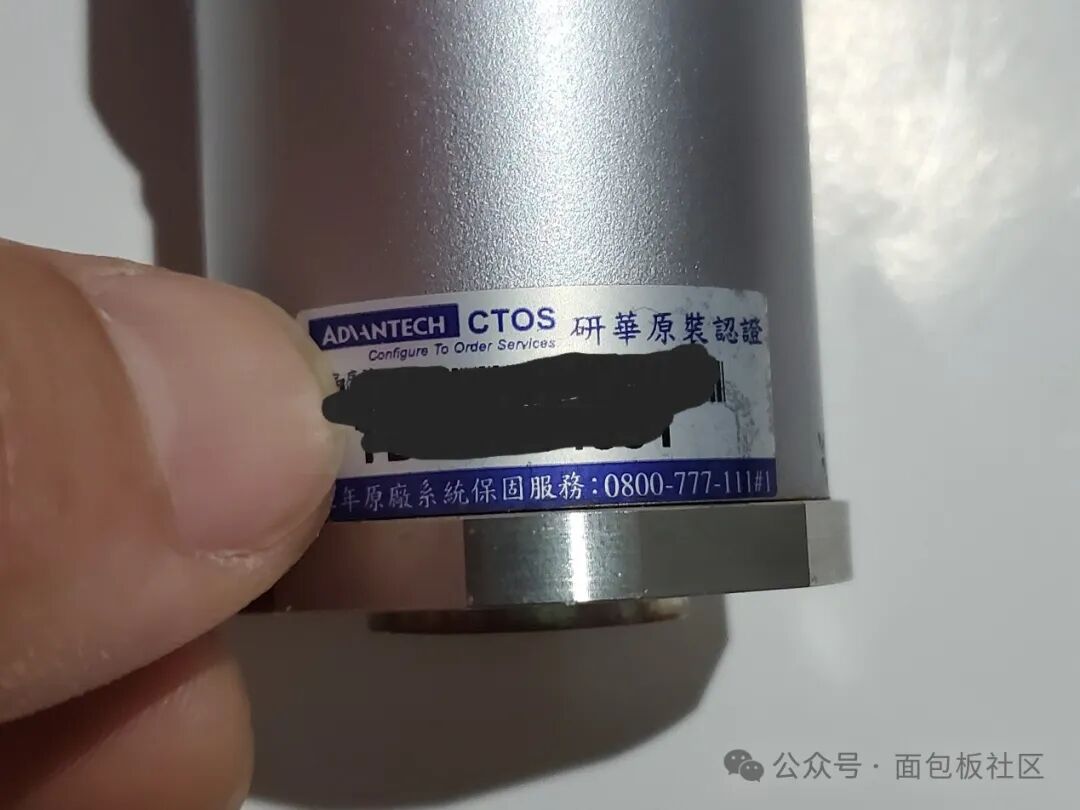 The bottom has a neodymium iron boron strong magnet. The outer ring has a threaded design for easy rotation and removal.
The bottom has a neodymium iron boron strong magnet. The outer ring has a threaded design for easy rotation and removal.
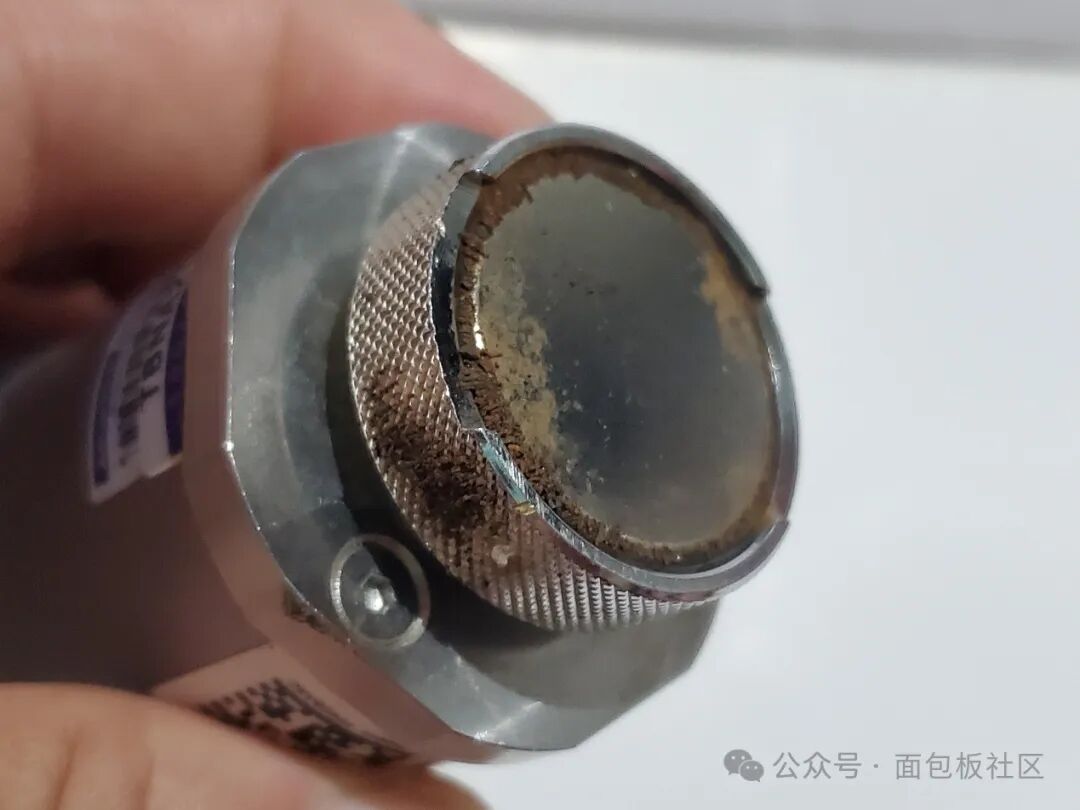 First, remove the outer shell by rotating it open. The shell aligns with the power button when locked. The bottom has a waterproof rubber ring, supporting IP66 waterproofing. The USB interface also has a waterproof ring.
First, remove the outer shell by rotating it open. The shell aligns with the power button when locked. The bottom has a waterproof rubber ring, supporting IP66 waterproofing. The USB interface also has a waterproof ring.
We can see that the battery is powered by two AA batteries.
 After removing the magnet, take off the two 2.5mm hex screws to separate the bottom stainless steel material.
After removing the magnet, take off the two 2.5mm hex screws to separate the bottom stainless steel material.
 Remove the two batteries. The other end of the battery is cushioned with sponge to effectively prevent vibration.
Remove the two batteries. The other end of the battery is cushioned with sponge to effectively prevent vibration.
 The battery interface. Why is it still using ordinary batteries instead of lithium batteries or rechargeable batteries in industrial applications?
The battery interface. Why is it still using ordinary batteries instead of lithium batteries or rechargeable batteries in industrial applications?
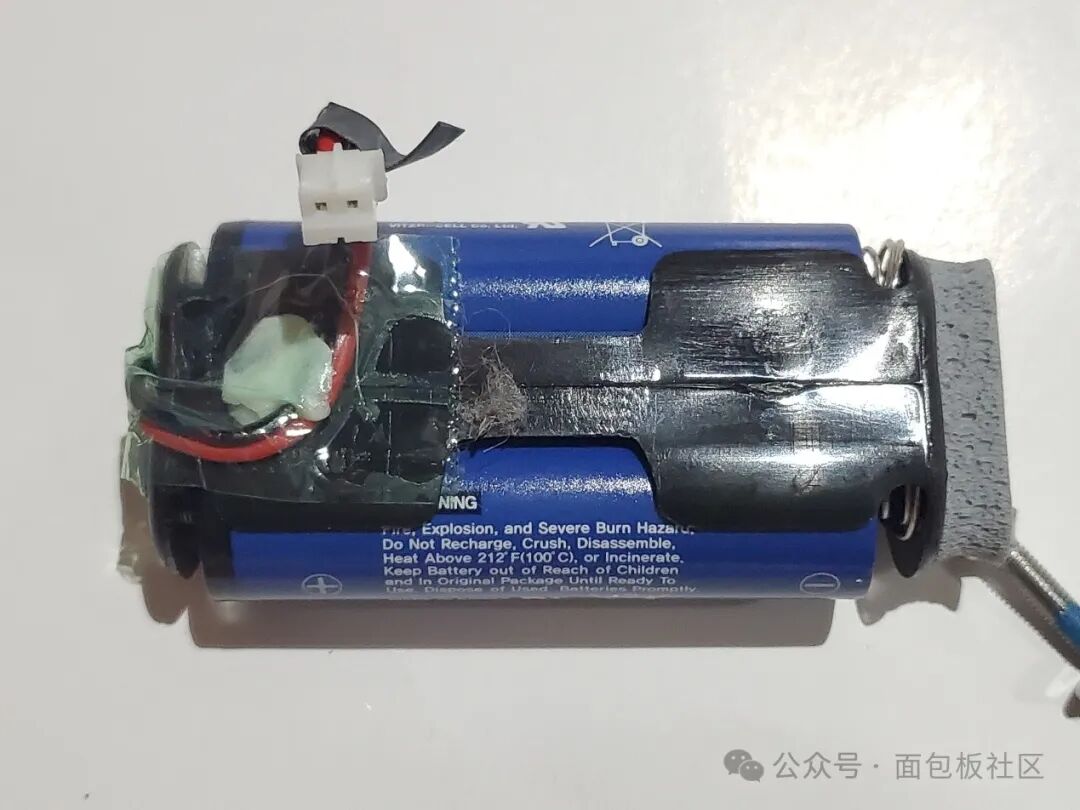 After removing the stainless steel shell, we can see the mainboard. The black material is for heat dissipation. The sensor is fixed to the mainboard with a screw and has a ribbon cable connecting to the stainless steel material.
After removing the stainless steel shell, we can see the mainboard. The black material is for heat dissipation. The sensor is fixed to the mainboard with a screw and has a ribbon cable connecting to the stainless steel material.
 The back of the mainboard has five chips and a USB interface. The upper left corner has a Q1 transistor that is not installed.
The back of the mainboard has five chips and a USB interface. The upper left corner has a Q1 transistor that is not installed.
 Returning to the front, the middle position should be the Wi-Fi module, as it connects wirelessly to the backend server to record the current vibration data.
Returning to the front, the middle position should be the Wi-Fi module, as it connects wirelessly to the backend server to record the current vibration data.
 Before removing the heat sink, there is also an SN label.
Before removing the heat sink, there is also an SN label.
 The main control chip is from ARM’s STMicroelectronics ultra-low power ARM Cortex-M4 microcontroller.
The main control chip is from ARM’s STMicroelectronics ultra-low power ARM Cortex-M4 microcontroller.
Silkscreen STM32L9A6RGT6
The STM32L4A6XG device is an ultra-low power microcontroller based on a high-performance Arm® Cortex®-M4 32-bit RISC core, with a maximum operating frequency of 80 MHz. The Cortex-M4 core features a single-precision floating-point unit (FPU) that supports all Arm® single-precision data processing instructions and data types. It also implements a full set of DSP instructions and a memory protection unit (MPU) to enhance application security. The STM32L4A6XG device has built-in high-speed memory (1 MB flash and 320 KB SRAM), a flexible external memory controller (FSMC) for static memory (for devices with 100 pins and above), a four-channel SP1 flash interface (for all packages), and a rich enhanced I/O and peripherals connected to two APB buses, two AHB buses, and a 32-bit multi AHB bus matrix.
The STM32L4A6XG device embeds multiple protection mechanisms for embedded flash and SRAM: read-out protection, write protection, proprietary code read-out protection, and firewall. These devices provide up to three fast 12-bit ADCs (5 Msps), two comparators, two operational amplifiers, two DAC channels, an internal voltage reference buffer, a low-power RTC, two general-purpose 32-bit timers, two 16-bit PWM timers dedicated to motor control, seven general-purpose 16-bit timers, and two 16-bit low-power timers. These devices support four digital filters for external Σ-Δ modulators (DFSDM). Additionally, up to 24 capacitive sensing channels are provided. These devices also embed an integrated LCD driver (8×40 or 4×44) with an internal boost converter.
They also feature standard and advanced communication interfaces, including four I2C, three SPI, three USART, two UART, one low-power UART, two SAI, one SDMMC, two CAN, one full-speed USB OTG, one SWPMI (Single Wire Protocol Master Interface), one camera interface, and one DMA2D controller. The STM32L4A6xG device embeds AES and HASH hardware accelerators. The STM32L4A6XG operates in a temperature range of -40 to +85°C (+105°C junction temperature), -40 to +125°C (+130°C junction temperature), with a supply voltage of 1.71 to 3.6V VDD when using an internal LDO regulator, and a supply voltage of 1.05 to 1.32V VDD12 when using an external SMPS power supply.
Comprehensive power-saving modes make low-power application design possible. It supports multiple independent power sources: independent analog power inputs for ADC, DAC, operational amplifiers, and comparators, a dedicated 3.3V power input for USB, and up to 14 IOs can be powered independently, with power consumption as low as 1.08 VA. The VBAT input can be used for backup RTC and backup registers. A dedicated VDD12 power supply can be used to bypass the internal LDO regulator when connected to an external SMPS. The STM32L4A6xG series offers six packages, from 64 pins to 169 pins.
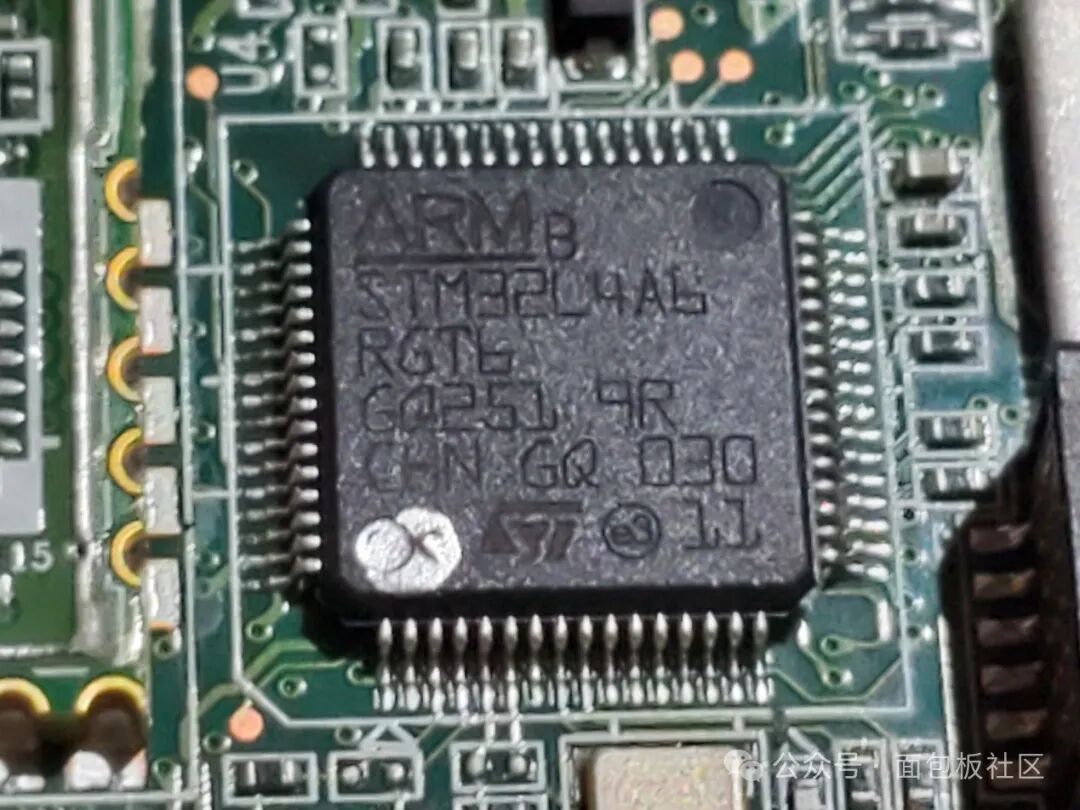 STM32L4A6R pinout
STM32L4A6R pinout
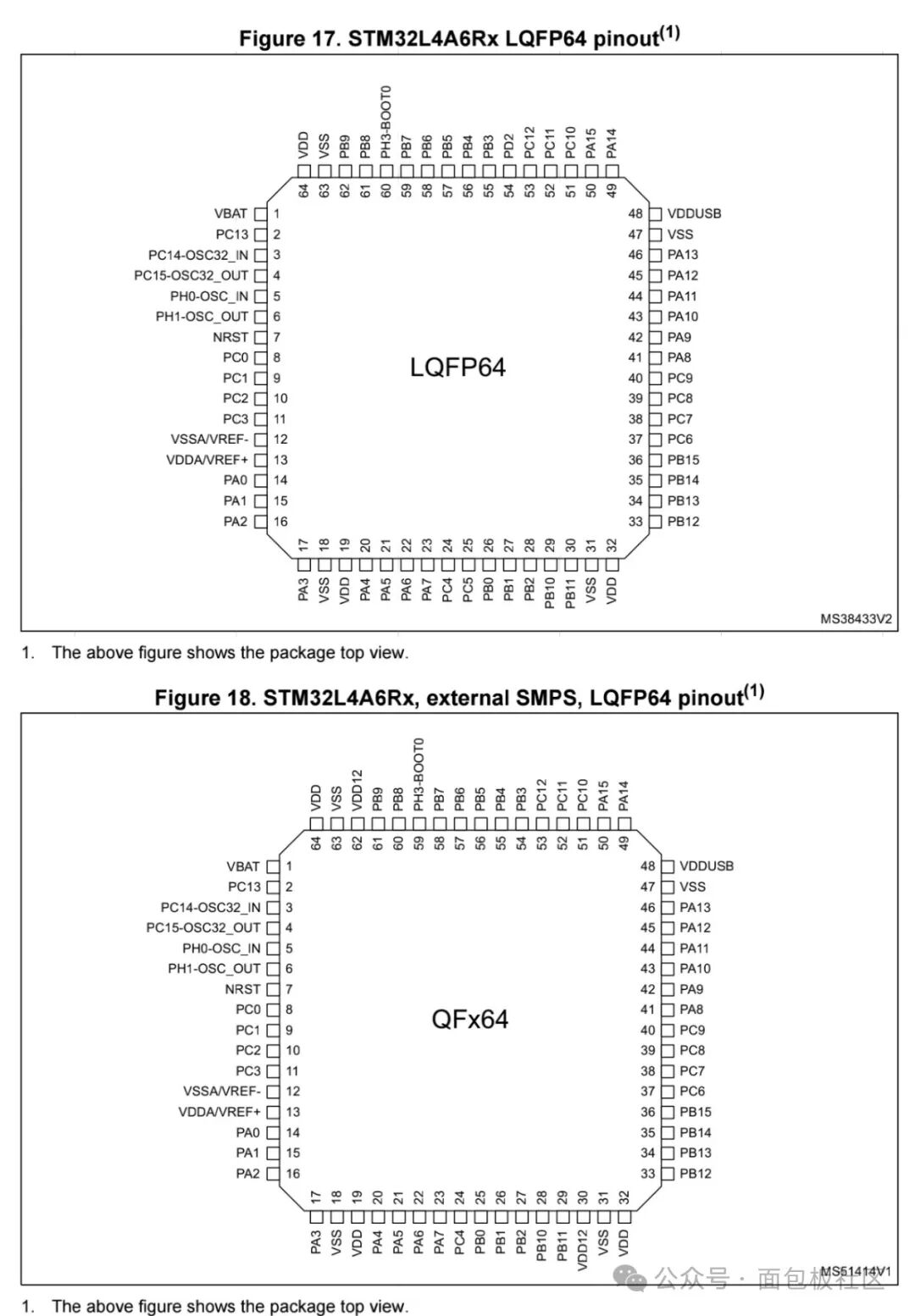 Mainboard silkscreen, version information A1, should be produced on January 6, 2020.
Mainboard silkscreen, version information A1, should be produced on January 6, 2020.
 The U7 silkscreen shows CP2103, a USB controller from Silicon Labs.
The U7 silkscreen shows CP2103, a USB controller from Silicon Labs.
CP2103 is a highly integrated USB-to-UART bridge controller that provides a simple solution to upgrade RS-232/RS-485 designs to USB with minimal components and PCB space. The CP2103 comes in a compact 5×5 mm QFN-28 package (sometimes referred to as “MLF” or “MLP”), containing a USB 2.0 full-speed functional controller, USB transceiver, oscillator, EEPROM, and asynchronous serial data bus (UART), with full modem control signals. No additional external USB components are required. The on-chip EEPROM can be used to customize the USB vendor ID, product ID, product description string, power descriptor, device version number, and device serial number according to OEM application needs. The EEPROM is programmed on-board via USB, making the programming step easy to integrate into the product manufacturing and testing process. The royalty-free virtual COM port (VCP) device driver provided by Silicon Laboratories allows CP2103-based products to appear as COM ports in PC applications. The CP2103 UART interface supports all RS-232/RS-485 signals, including control and handshake signals; thus, no modification to existing system firmware is required. The device also has up to four GPIO signals that users can customize for status and control information. It supports VO interface voltages as low as 1.8V through the VIO pin. In many existing RS-232 designs, upgrading the design from RS-232 to USB can be done simply by replacing the RS-232 level shifter with the CP2103. Direct access driver support is available through the Silicon Laboratories USBXpress driver suite.
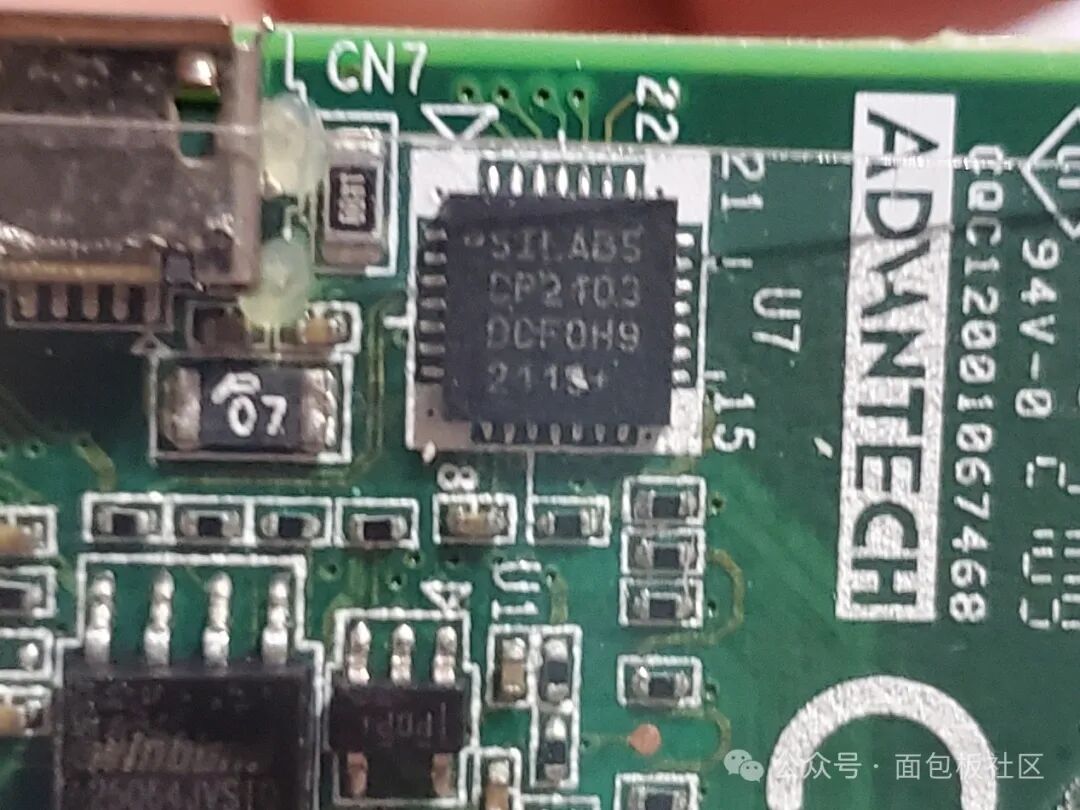 CP2103 pinout
CP2103 pinout
 The U6 silkscreen is faintly visible as Winbond’s 25053VS, but I couldn’t find chip information.
The U6 silkscreen is faintly visible as Winbond’s 25053VS, but I couldn’t find chip information.
 There are a total of three screws at the bottom, fixed with stainless steel. I did not open the back sensor. If anyone is interested in seeing the internal structure of the sensor, please leave a message, and I will open it for you.
There are a total of three screws at the bottom, fixed with stainless steel. I did not open the back sensor. If anyone is interested in seeing the internal structure of the sensor, please leave a message, and I will open it for you.
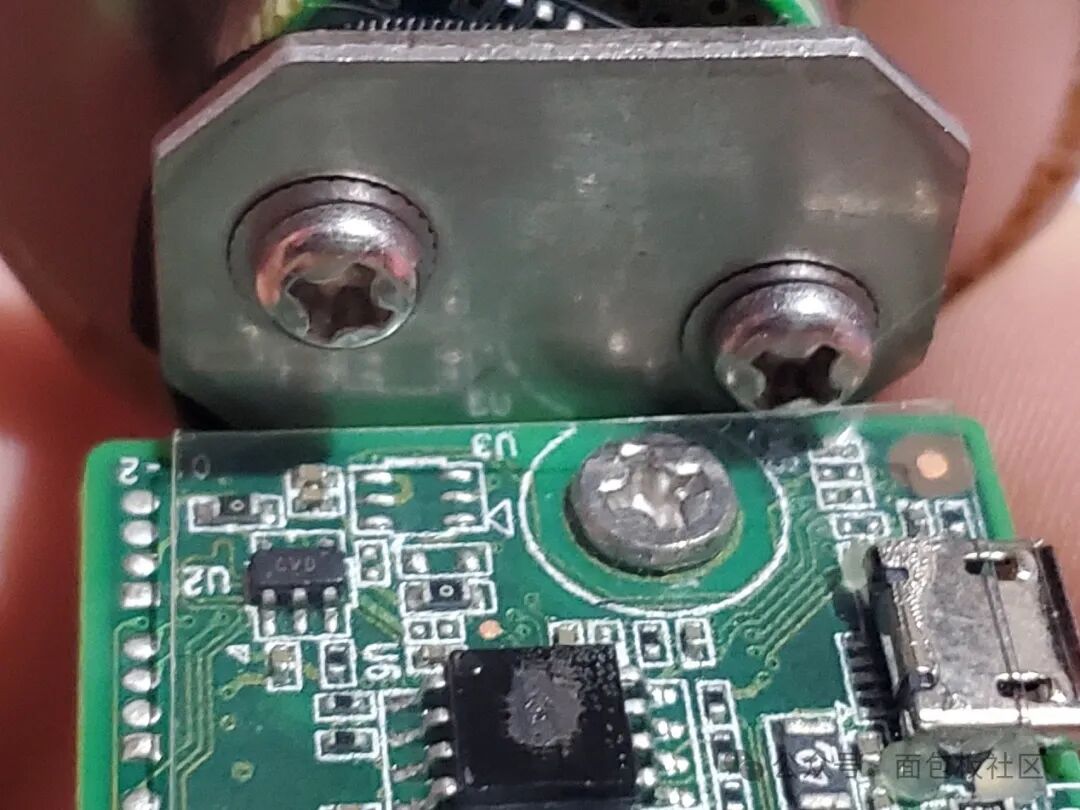 Application scenario: on the XYZ axis of a water pump, to detect motor vibration values, with preset upper and lower limits. If exceeded, it will alarm. It is necessary to check whether the device has faults in a timely manner. Early warning can minimize losses.
Application scenario: on the XYZ axis of a water pump, to detect motor vibration values, with preset upper and lower limits. If exceeded, it will alarm. It is necessary to check whether the device has faults in a timely manner. Early warning can minimize losses.
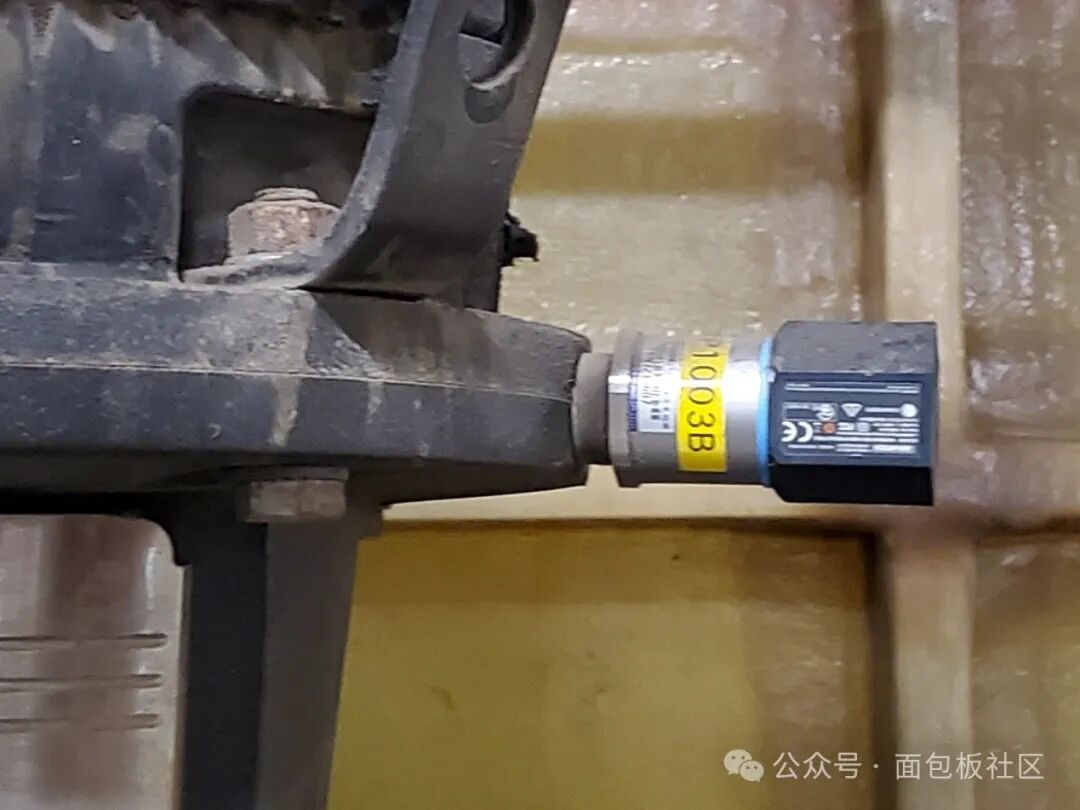 Installed at the head position of the ice machine equipment.
Installed at the head position of the ice machine equipment.
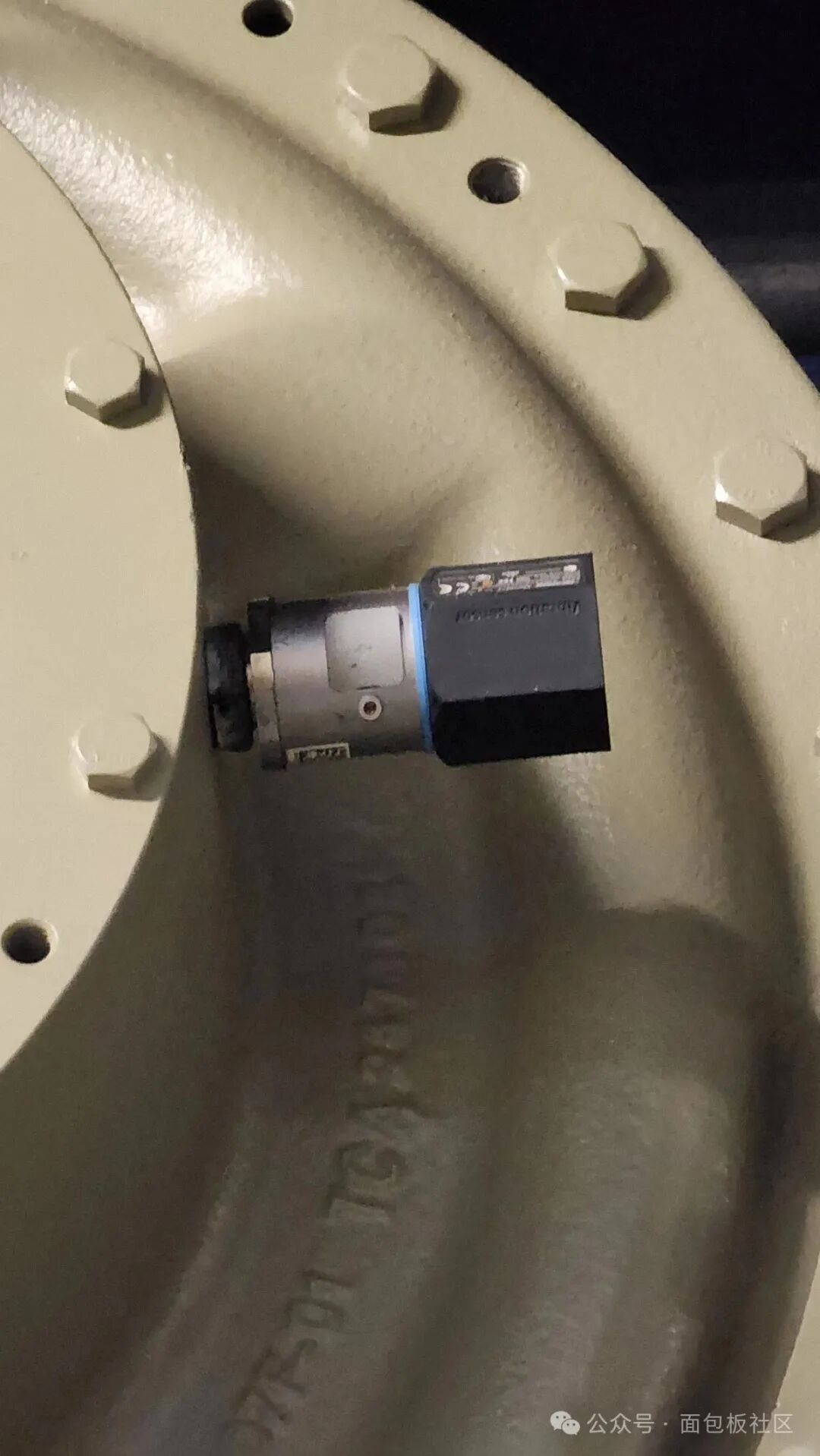 Currently, it is priced at over 3000 on a certain e-commerce platform. What do you think about this price and the materials used? Friends are welcome to discuss.
Currently, it is priced at over 3000 on a certain e-commerce platform. What do you think about this price and the materials used? Friends are welcome to discuss.
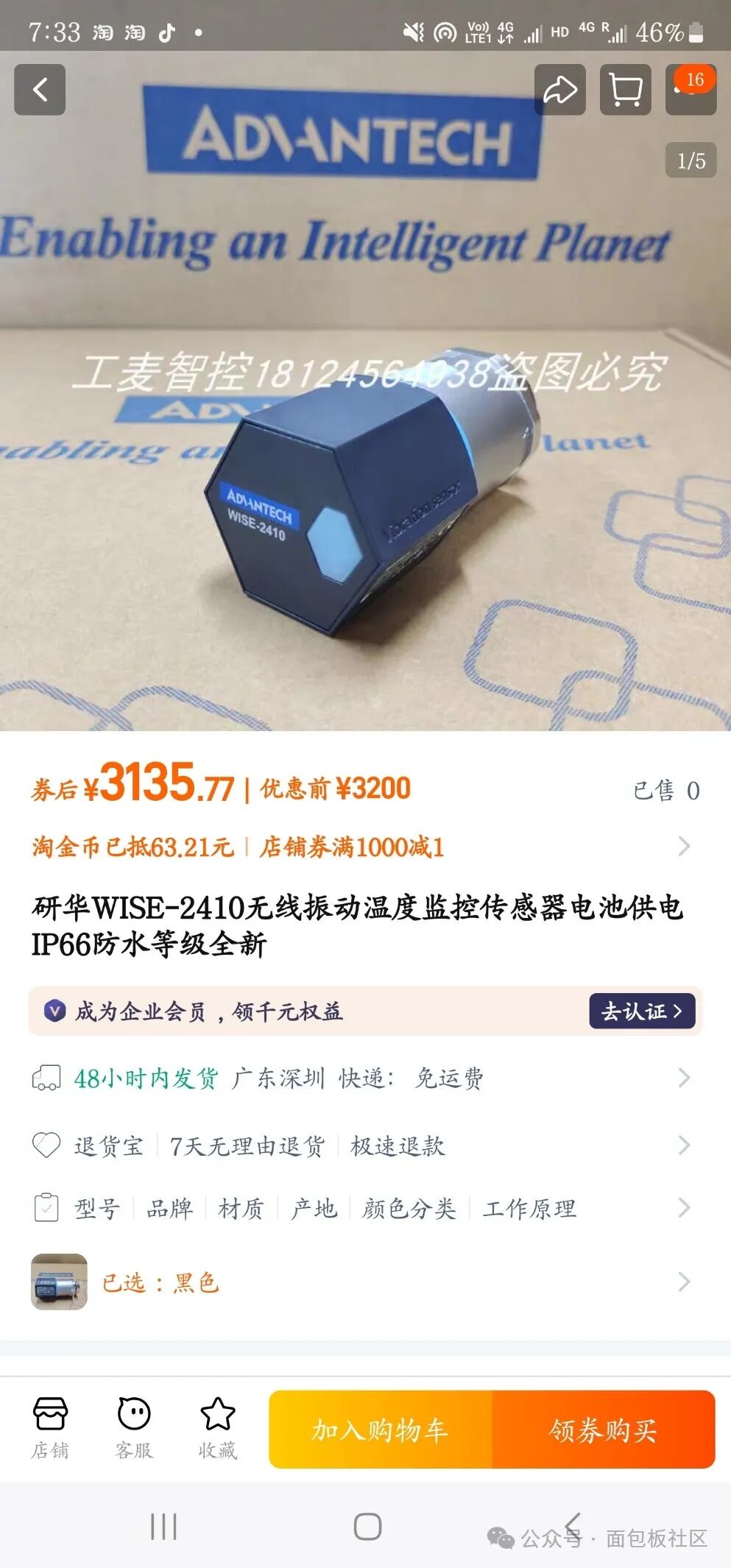
The motor vibration sensor (also known as a vibration sensor or vibration detector) is a sensor used to detect whether an object is vibrating, the frequency of vibration, or its intensity, widely used in industrial monitoring, smart devices, security, health devices, and motor fault warning.
Functions of the motor vibration sensor:
- Detecting vibration: determining whether the equipment is running (e.g., motor, engine).
- Monitoring anomalies: identifying whether there are abnormal vibrations for early maintenance.
- Counting or triggering signals: in some applications, vibrations can trigger alarms, records, or control logic.
Common types:
- Piezoelectric sensors
Working principle: uses piezoelectric materials to generate charge when stressed to sense vibration.
Characteristics: high sensitivity, fast response.
Applications: industrial equipment, motor status monitoring.
- MEMS accelerometers
Working principle: micro-electromechanical systems that detect changes in acceleration to determine vibration.
Characteristics: small size, high integration, wide frequency range measurement.
Applications: smartphones, wearable devices, drones, etc.
- Electromagnetic induction (spring + magnet structure)
Simple principle, generates induced current during vibration.
Commonly used in simple detection scenarios, such as switch triggering.
Determining whether the motor is started or running.
Detecting motor anomalies: bearing wear, imbalance, looseness.
Used in IoT/edge devices for remote monitoring.
So, based on the wiring, the one I disassembled is likely an electromagnetic induction sensor. Is anyone interested? Leave a message if you want me to open it up and take a look at the front end.

Hello everyone, I am Board Brother!
The new disassembly activity of the Breadboard Community has been launched, with prizes available (oscilloscope, sports/panoramic camera, high-definition infrared thermal imager; DJI Neo follow drone, Raspberry Pi 5, Fluke digital multimeter, etc.), and there are rewards just for participating. Fans, let’s get disassembling!
Activity details👉The first phase of the 2025 Breadboard Community disassembly activity is here~~~

Recommended reading

Dissecting a 20-year-old indestructible USB flash drive: 128M Toshiba flash memory, showcasing the last stubbornness of Japan’s semiconductor industry~
2025-04-16

A common interview question in hardware: discuss the gain bandwidth product of operational amplifiers.
2025-04-16

Dissecting a uniquely designed Panasonic tape recorder: showcasing the prosperity of Japan’s semiconductor industry back then~
2025-04-15
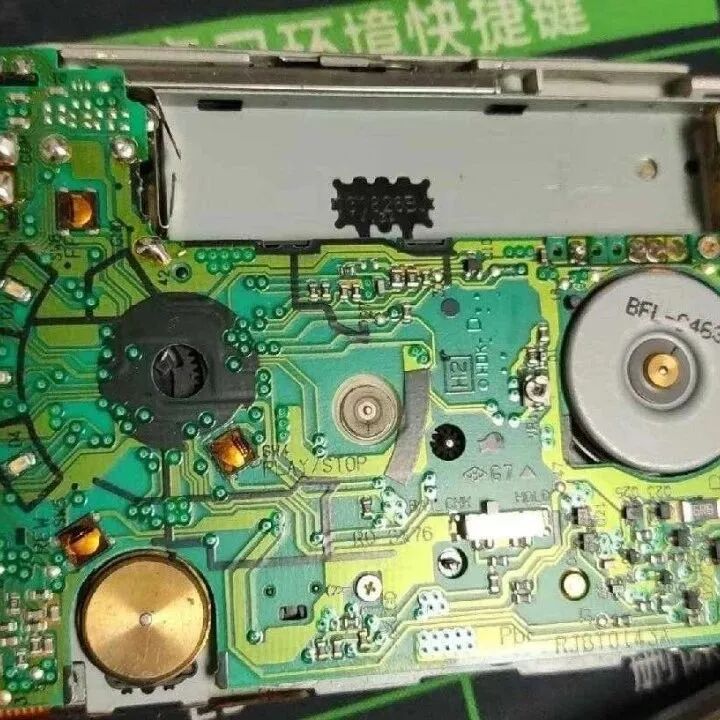
The MASSAGE GUN, sold for dozens of yuan, has become a hit. Let’s dissect it and see how the manufacturer reduces costs.
2025-04-14
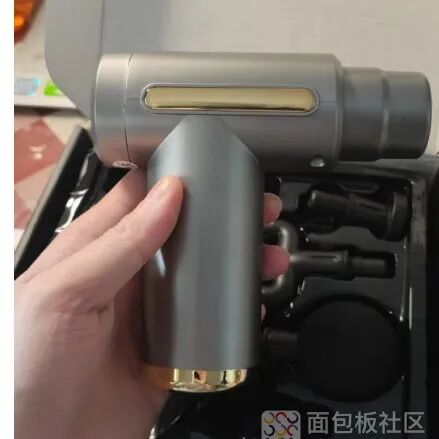
A clumsy person dissects a laser radar and discovers a mysterious chip…
2025-04-12
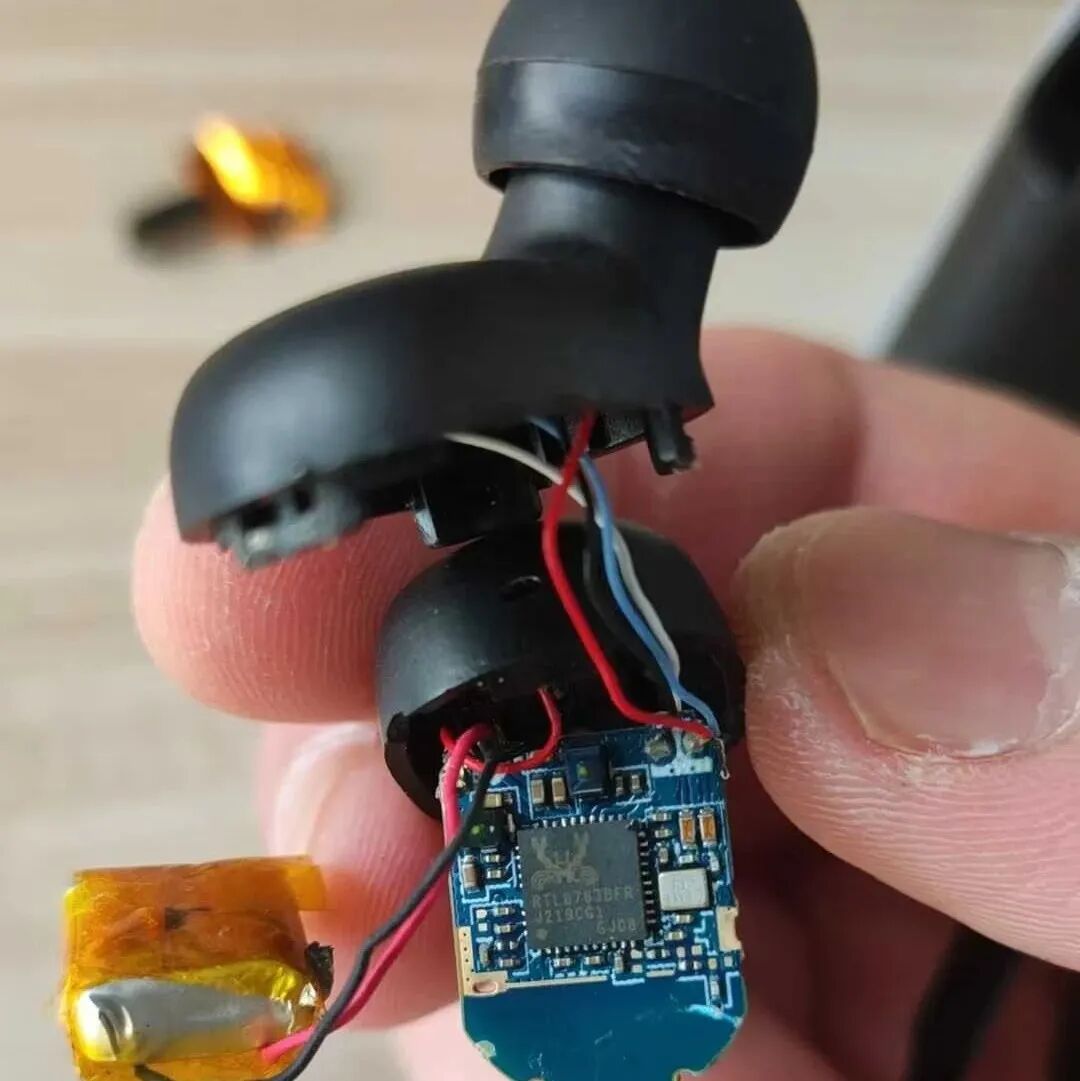
Dissecting the QCY T1 Bluetooth earphones and replacing the battery: once again encountering the crab RTL8763 solution.
2025-04-11

Hi Li Lei, I am Han Mei Mei! Dissecting a popular English learning recorder from back in the day: it is evident that the design was much more complex and cumbersome than it is now~
2025-04-10
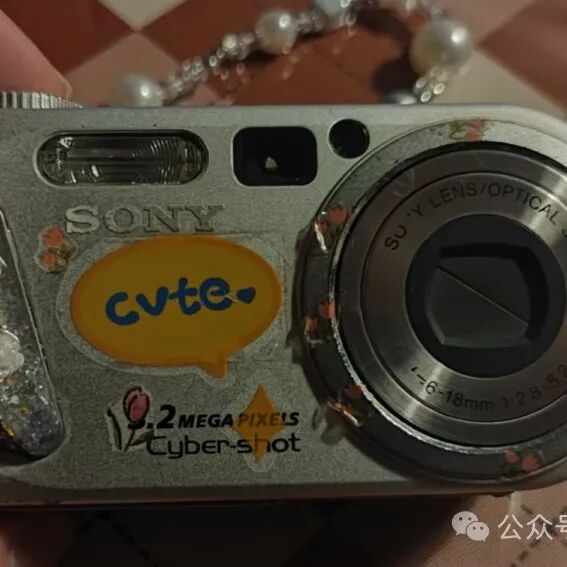
Secretly disassembling an antique camera — Sony DSC-P8 CCD camera, intending to replace the screen for a surprise, but couldn’t put it back together!
2025-04-09

Dissecting a battery tester given with Nanfu batteries, let’s take a look at its working principle and circuit.
2025-04-08